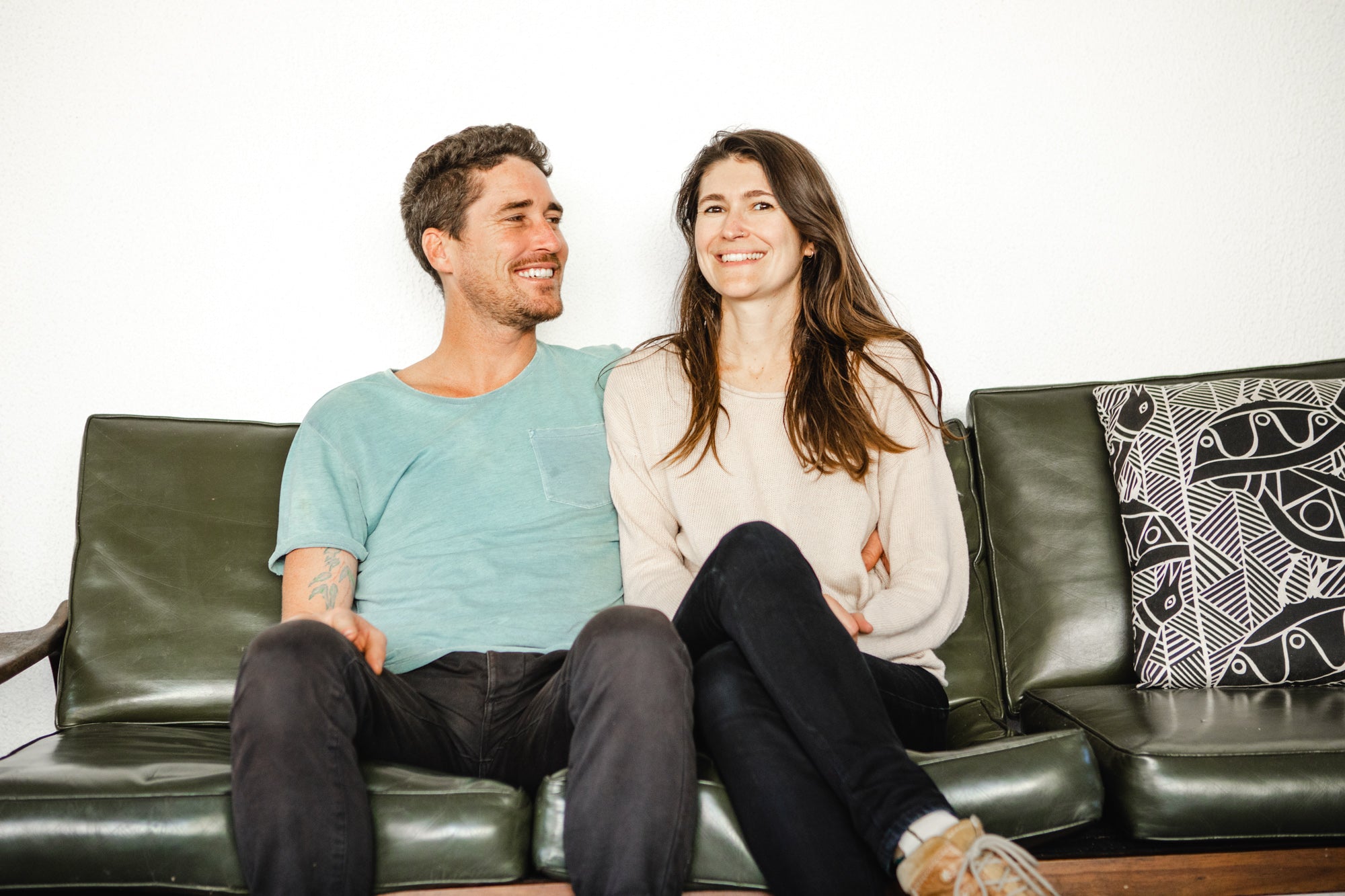As Burleigh Heads (Jellurgal) locals ourselves, we are always excited to discover like-minded businesses nearby who share our passion for Indigenous culture and positive social and environmental change. And that is just what local legends Relative Creative are all about.
The oh-so-lovely Co-Director Bec Barnett was kind enough to take time out of her busy day to answer a few questions. This is a seriously solid chat brimming with important information, so grab a refreshment and make yourself at home as we get deep with Bec on all things ethical, environmental, local and creative.
How did Relative Creative begin?
Tristan Schultz founded Relative Creative a decade ago, but it is over the last six years that the practice has really taken the shape it's in today. Relative Creative first began as a way for Tristan to develop his creative practice, on his own terms and as the practice has grown and gained more experience, we have been able to refine this into the strategic practice Relative Creative is today. Tristan has Gamilaroi heritage and this, alongside work Tristan has done with Elders and communities, contributes to shaping both our practice ethos and the approach we take to our work. Today, Relative Creative is co-directed by Tristan Schultz and Bec Barnett.
Tell us a bit about the type of work that you do.
We are a strategic design practice with extensive experience in visual communication design. This means that we can unpack complex systemic problems in a way that is appropriate to a wide range of different audiences. Whether this is through the design and delivery of kids design workshops tackling complicated issues like water security, waste and sustainable cities or working with the Kingdom of Tonga to develop a Long-Term Low Emissions Development Strategy.
Our work is really varied with clients from all levels of governments as well as other like-minded businesses and organisations. As well as considering how each project contributes to a sustainable environmental future, we regularly consider what capacity each project has to decolonise. This looks different for each project but as an example, we’ve done two recent projects where we have ensured that including Yugambeh speaking community in consultations and incorporating language into the designs and interpretive experience was integral to the project.
Your mission statement outlines that you are "serious about social responsibility, sustainability, social justice and equity...." - Can you please elaborate on this?
We believe that we can’t live in a sustainable world without social justice and equity.
To elaborate, we believe that sustainability in the truest sense of the word is ending the depletion of natural resources, eliminating damaging waste practices and working towards (and ultimately achieving) zero emissions. This is not possible without social justice and equity.
Social justice refers to a just (fair) distribution of wealth, opportunities, and privileges within a society. We believe that everyone deserves equal economic, political and social rights and opportunities. This is regardless of race, class or gender. Like many in the intersectional environmentalism community, we don’t believe that we can have environmental sustainability without social justice. This recognises that environmental destruction is often tied to behaviours embedded in the white supremacist patriarchy. For true sustainability we need to decolonise, depatriachise and redistribute wealth. The concept of equity in this context is important as it underscores the importance of giving people what they need, in order to make things fair.
To achieve this bigger picture requires businesses (and people) to get serious about social responsibility and the ethical framework this requires. For us as a design practice this is guided by sustainability, social justice and equity. We ask ourselves “What is our responsibility to the society you live in?” and work to create projects that help others ask the same. Over the years, we have been on a constant journey to edge closer and closer to what we get paid for aligning with our values. We are in a pretty good place with this, but always ask the same question about each project before accepting it.
What is it that makes Burleigh Heads/Jellurgal such an important region in your eyes?
So many things that are difficult to explain in words alone. It really is a place that you need to spend time in to fully understand all it offers. As well as a world class wave, you’ve got clean beaches and the calm waters of the beautiful Talle Creek. The cultural significance of Jellurgal should also not be understated and while this is not actively celebrated throughout the community (yet), we believe it is this that provides an undercurrent to why Burleigh remains such a significant site today.
From an urban design perspective Burleigh still is, just, a great example of how a suburb can function more like a village or small town with James Street acting as a central hub for shops and services. Medium density housing and three-story units offered an example of a human scale density could function…and how this can be easily eroded by rampant development. It is important because it provides a good starting point for what future oriented, sustainable suburbs could look like with a little bit of extra love/work (cycle paths, pedestrianisation, community agreed height limits etc.).
As Burleigh locals ourselves, one particular project of yours grabbed our attention - Gold Coast City Futures. Can you tell us a little about how it began?
Our Gold Coast City Futures project exists as an output for our Design Lab program. We established this to facilitate meaningful civic engagement between design professionals, community advocates, scientists, policymakers, planners, the business sector and universities all coming together to connect and co-design social, environmental, economic and culturally sustainable and innovative futures. Currently it is funded through Triennial Arts Funding by the City of Gold Coast Arts and Culture Unit.
We see this component of our practice as being as important as our client-based work. It provides us the scope to push our thinking and ideas beyond the limitations that can exist within corporate work. This then feeds back into client-based work in the form of better understandings of complex systems and new ideas.
What do you hope to achieve through the (GC City futures) project?
We want to elevate the conversation on the Gold Coast around just transitions. We do a lot of work nationally and globally and we find that the level of conversation locally is often still stuck in the “is climate change real” debate. Well it is real and there are really clear ways we can act. Thinking about what a just transition looks like locally is just one step in this action.
What is a just transition?
If you’re new to the climate action conversation, you might not have heard the term “just transition” before. With its roots in the trade union movement a just transition originally focussed on the interventions necessary to protect workers as an economy shifts towards combating the climate crisis. The clearest example of this is the potential to transition workers from the fossil fuel industry into the renewable energy industry. This concept has been pushed further in recent years to refer to an equitable and fair shift towards sustainable practices. These are in the form of climate resilient policies and systems that underpin efforts towards climate action. Just transitions are about benefiting the community to ensure any hardships are eased and that any transitions are fair and equitable as we face the climate crisis.
What is your ideal vision for the future of your local area?
It’s actually very similar to what came out of the Burleigh Futures project which is really interesting because the structure of the project allowed the public to have lots of very unstructured input so there were limited points where we guided the public’s perception of what the future could be.
Our ideal vision for the future is a suburb/village centre that prioritises active (walking, cycling) and public transport over private car use. Some of this would be achieved through the pedestrianisation of James St and better cycling infrastructure. All of this can be achieved fairly affordably.
Our future has a three-story height limit on all new developments, prompting the design and building of human scale dwellings. These would offer a range of housing types, including affordable housing to ensure long-term Burleigh locals are not priced out of the market, that young people can afford housing and that the area does not become gentrified. New developments would be expected to create zero emissions in their operation, through the use of solar power and solar hot water and other technologies we have at our fingertips. Beyond this, considering how we could design new buildings, or retrofit old ones to sequester carbon would be an important step.
Culturally, there would be much better engagement with local Yugambeh speaking people and other First Nations locals. There would be a process of truth-telling undertaken. Indigenous Knowledge and practices would be embedded into the maintenance of the National Park and other green spaces. We would like a future where Yugambeh culture is much more visible and a central part of what it means to live, work and/or play in Burleigh.
What kind of action do you believe that individuals can take to help to create a better future?
We often think about actions in terms of whether they are systemic (big scale change) or whether they are individual (personal behaviour change), this can set up a false dichotomy pitting actions against each other when really, we need both.
For systemic change we need to actively engage in all level of politics. Understanding who you are voting for and how their platform contributes to the sort of future you want is a good starting point. But civic engagement shouldn’t stop after an election. We should continue to reach out to our elected representatives to ensure they are voting with our interests in mind. We can apply this thinking to our money as well, often with our banks, super, mortgages and insurance we set the accounts up and forget about it. Many of these institutions fund activities that are directly in conflict with the level of change we need to see (for example by funding the fossil fuel industry).
But in describing these changes and how we might start achieving them, you can begin to see how individual action is important. Plus, when individuals work together as a collective the action has much bigger impact.
TLDR; keep avoiding single use items, catching the bus/riding your bike and help your friends and family do the same BUT also consider how you can engage in politics and divest from industries that conflict with having a better future.
It’s also important to remember you can’t do everything. We need people thinking about and taking action at all sorts of levels and within all sorts of systems. The first step is to think about what is in your sphere of influence, what can you do?
Any final thoughts you'd like to leave us with?
All of the visions that people have for the future of Burleigh are totally achievable with what we already know. Many of them would not be costly to implement and all of the would contribute to a more vibrant and equitable society.
Currently we are being held back in our ability to confront the climate crisis and social inequity by politicians with no vision except how to line the pockets of their friends and ensure that they can maintain power. This is not leadership. We’re really interested in change and keen to keep having conversations with other businesses like Life Apparel about how we can do this, together.







Share:
A National Apology, Thirteen Years On
Opening Doors through Literacy and Numeracy